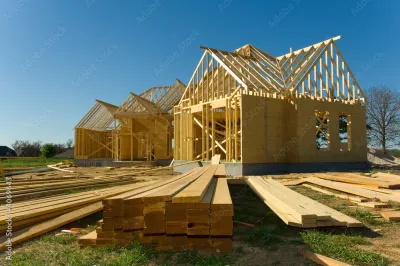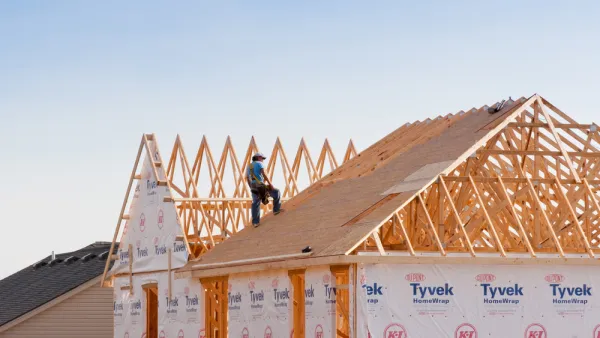U.S. homes are adding bedrooms while getting smaller, according to two seemingly contradictory articles published on the same day from different data sources earlier this month.

Contradictory conclusions about the direction of the new-build housing market circulated online on the same day this month.
On August 22, an article by Justin Fox for Bloomberg included the following data to support an article about the increasing number of bedrooms in newly constructed housing units.
Of the just over a million new single-family houses completed in the US last year, 490,000 had four or more bedrooms. That worked out to a 48% share, the highest since the US Census Bureau started keeping track in 1973—and more than double the percentage in 1973.
Another article, by Maggie Eastland for the Wall Street Journal [paywall], reported on generally shrinking footprints of new housing construction:
Since 2018, the average unit size for new housing starts has decreased 10% nationally to 2,420 square feet, according to Livabl by Zonda, a listing platform for new construction homes. Construction starts for new single-family homes declined in 2022. But starts for homes with fewer than three bedrooms increased 9.5% over the same period, according to a Zillow report.
The stories don’t totally reach opposite conclusions, however. Fox’s coverage acknowledge’s that the increase in the number of bedrooms doesn’t necessarily mean a commensurate increase in square footage:
While the median floor area of new single-family houses rose slightly in 2022, to 2,299 square feet, it’s still below pre-pandemic levels, and quarterly statistics on housing starts indicate that it will fall in 2023. But the uses to which that space is put are changing.
Further complicating any simple interpretation of the two stories are the explanations behind each of the trends reported by these two articles. Both assumptions seem reasonable: Americans want more bedrooms to facilitate working from home, according to the story about homes adding bedrooms, and less square footage is intended to lower the cost of housing, according to the story about homes decreasing in square footage.
FULL STORY: Never Mind Shrinking Households, Builders Are Adding Bedrooms

National Parks Layoffs Will Cause Communities to Lose Billions
Thousands of essential park workers were laid off this week, just before the busy spring break season.

Retro-silient?: America’s First “Eco-burb,” The Woodlands Turns 50
A master-planned community north of Houston offers lessons on green infrastructure and resilient design, but falls short of its founder’s lofty affordability and walkability goals.

Delivering for America Plan Will Downgrade Mail Service in at Least 49.5 Percent of Zip Codes
Republican and Democrat lawmakers criticize the plan for its disproportionate negative impact on rural communities.

Test News Post 1
This is a summary

Test News Headline 46
Test for the image on the front page.

Balancing Bombs and Butterflies: How the National Guard Protects a Rare Species
The National Guard at Fort Indiantown Gap uses GIS technology and land management strategies to balance military training with conservation efforts, ensuring the survival of the rare eastern regal fritillary butterfly.
Urban Design for Planners 1: Software Tools
This six-course series explores essential urban design concepts using open source software and equips planners with the tools they need to participate fully in the urban design process.
Planning for Universal Design
Learn the tools for implementing Universal Design in planning regulations.
EMC Planning Group, Inc.
Planetizen
Planetizen
Mpact (formerly Rail~Volution)
Great Falls Development Authority, Inc.
HUDs Office of Policy Development and Research
NYU Wagner Graduate School of Public Service




























